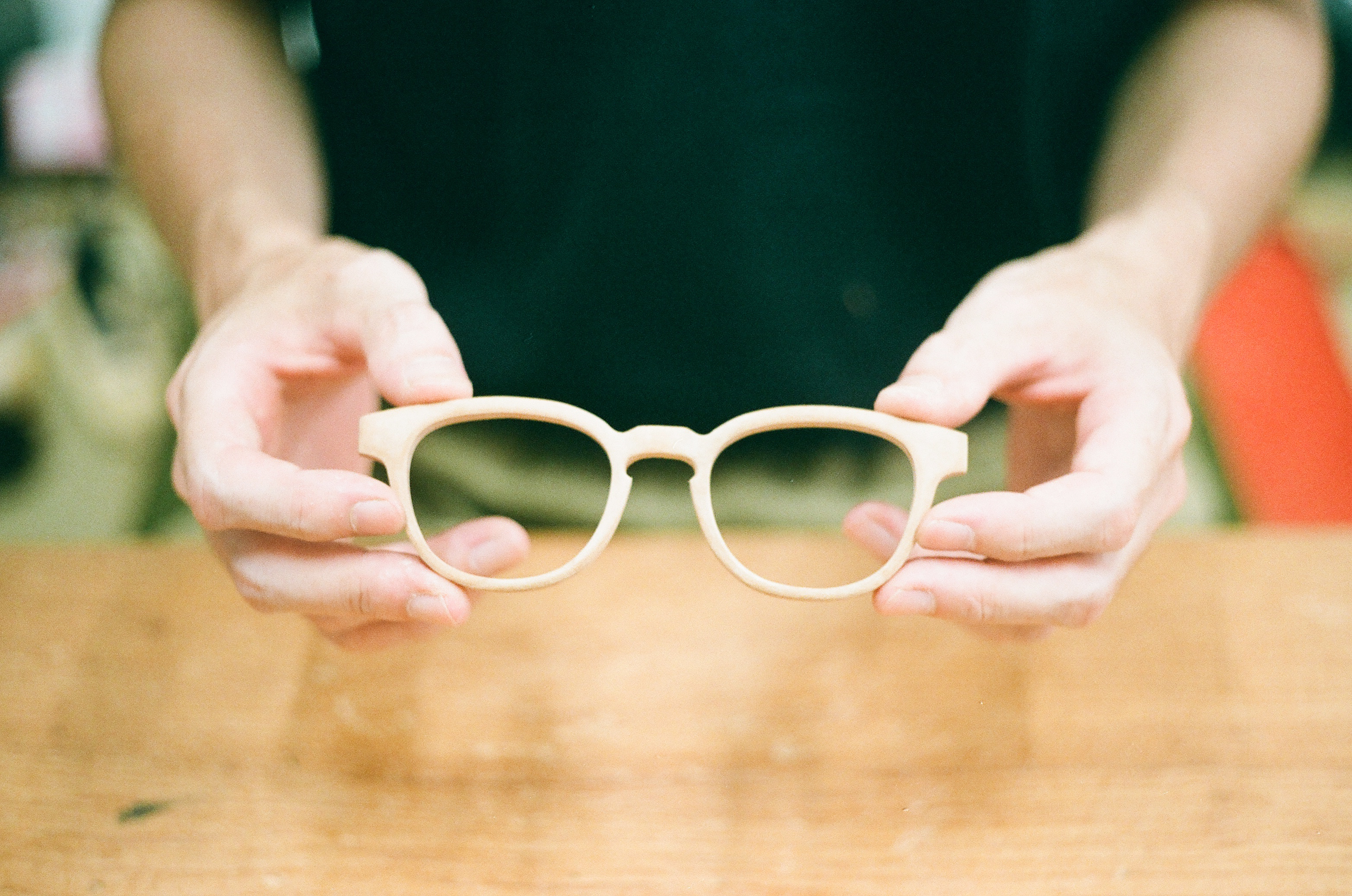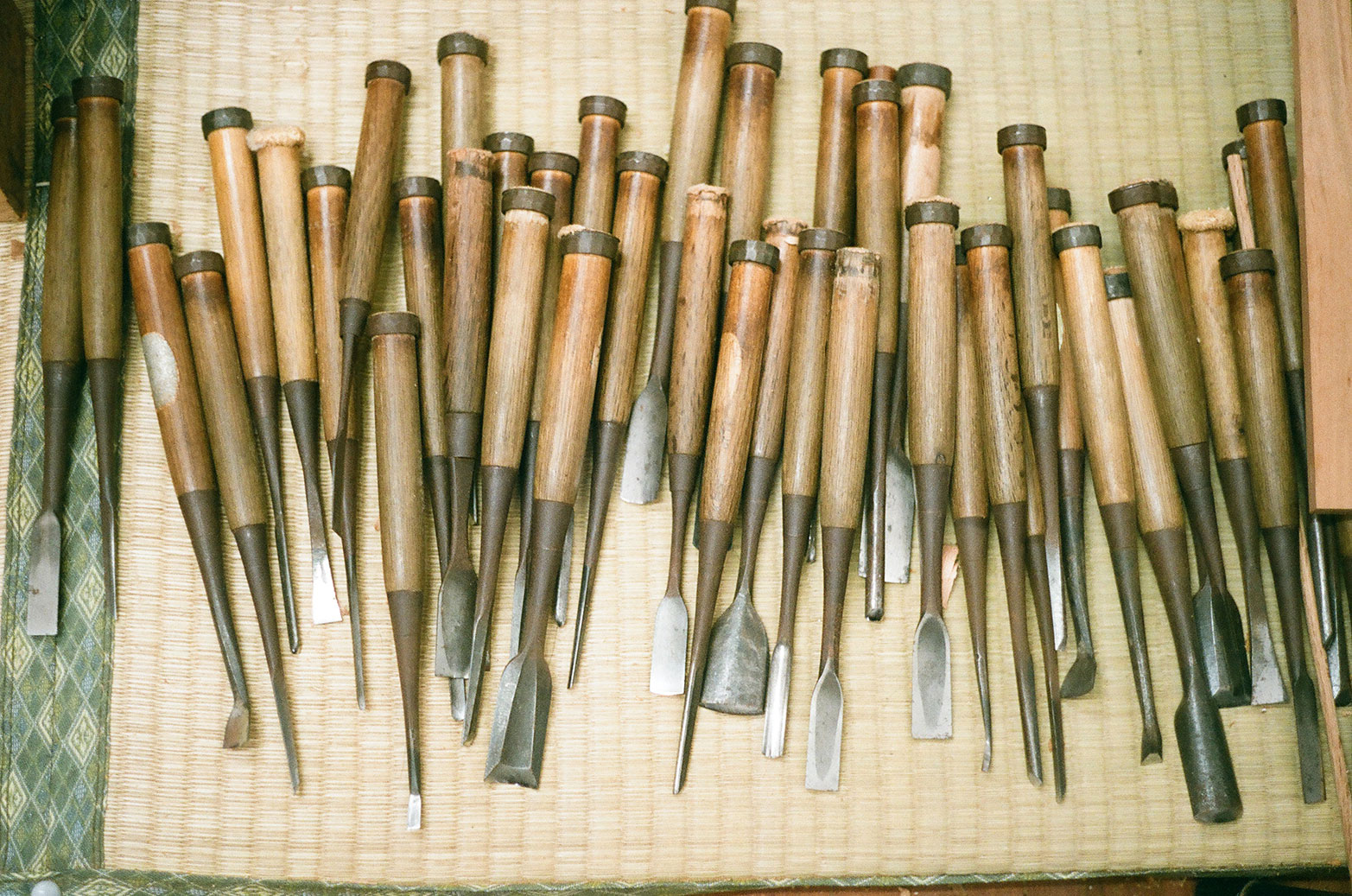
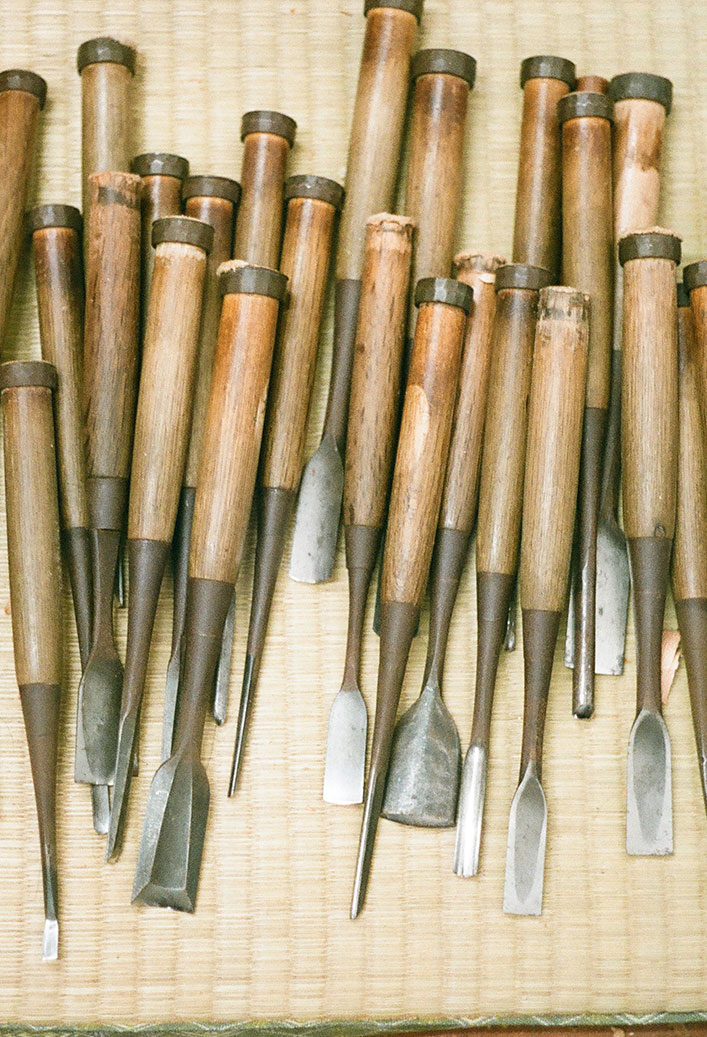
EYEVAN × KYOTO
interview 7
“Danjiri and confectionery wood mold carvings”
Mr. Tomohiko Taniguchi, Taniguchi Chokoku Kogei (est. 2018 / Kamigyo-ku, Kyoto City)
Confectionery wooden molds are necessary in the process of making Japanese wagashi such as Wasanbon and Rakugan. There are only a few craftsmen in Japan who make wooden molds for confectioneries. As with confectionery molds, special skills are now being lost in eyeglass making due to the aging of the population. Mr. Taniguchi, who loved creating things with his hands since he was a child, says that while working on sculptures of temples, shrines, and Danjiri, this is the main reason why he makes confectionery wooden molds. We interviewed Mr. Taniguchi of Taniguchi Chokoku Kogei about confectionery wooden molds and sculpture.
About confectionery wooden molds
Tools supporting Japanese Wagashi in Kyoto
A “confectionery wooden mold” is a wooden mold used especially for forming dried or fresh Japanese confectionery. They are designed and carved to be opposite to the confectionery design on the left and right, and to be opposite to the concavity and convexity. You may have seen old confectionery wooden molds that are no longer in use lined up above the entrance when you visit a Japanese wagashi shop in Kyoto. I believe that many wagashi shops in Kyoto still use them.
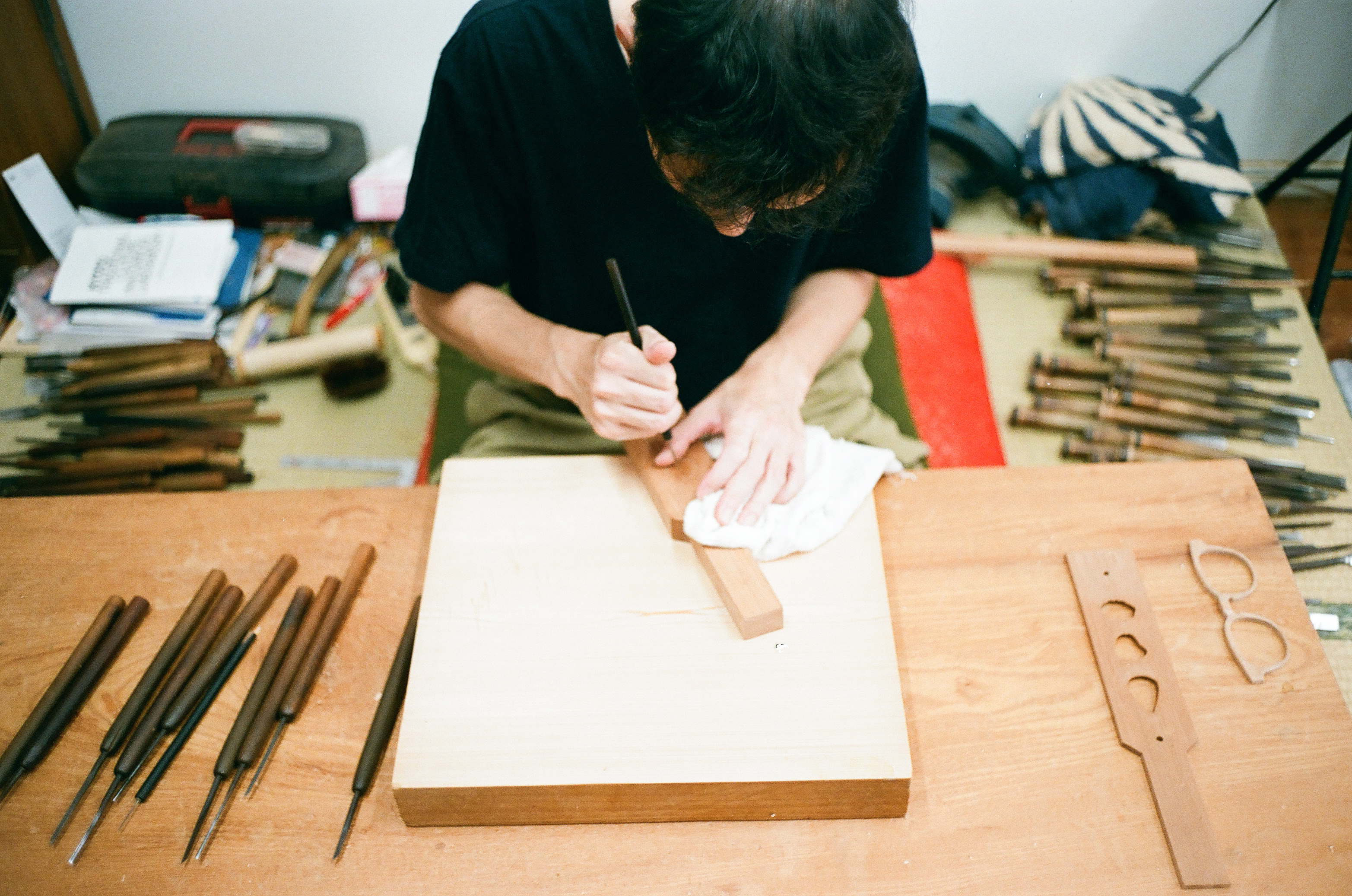
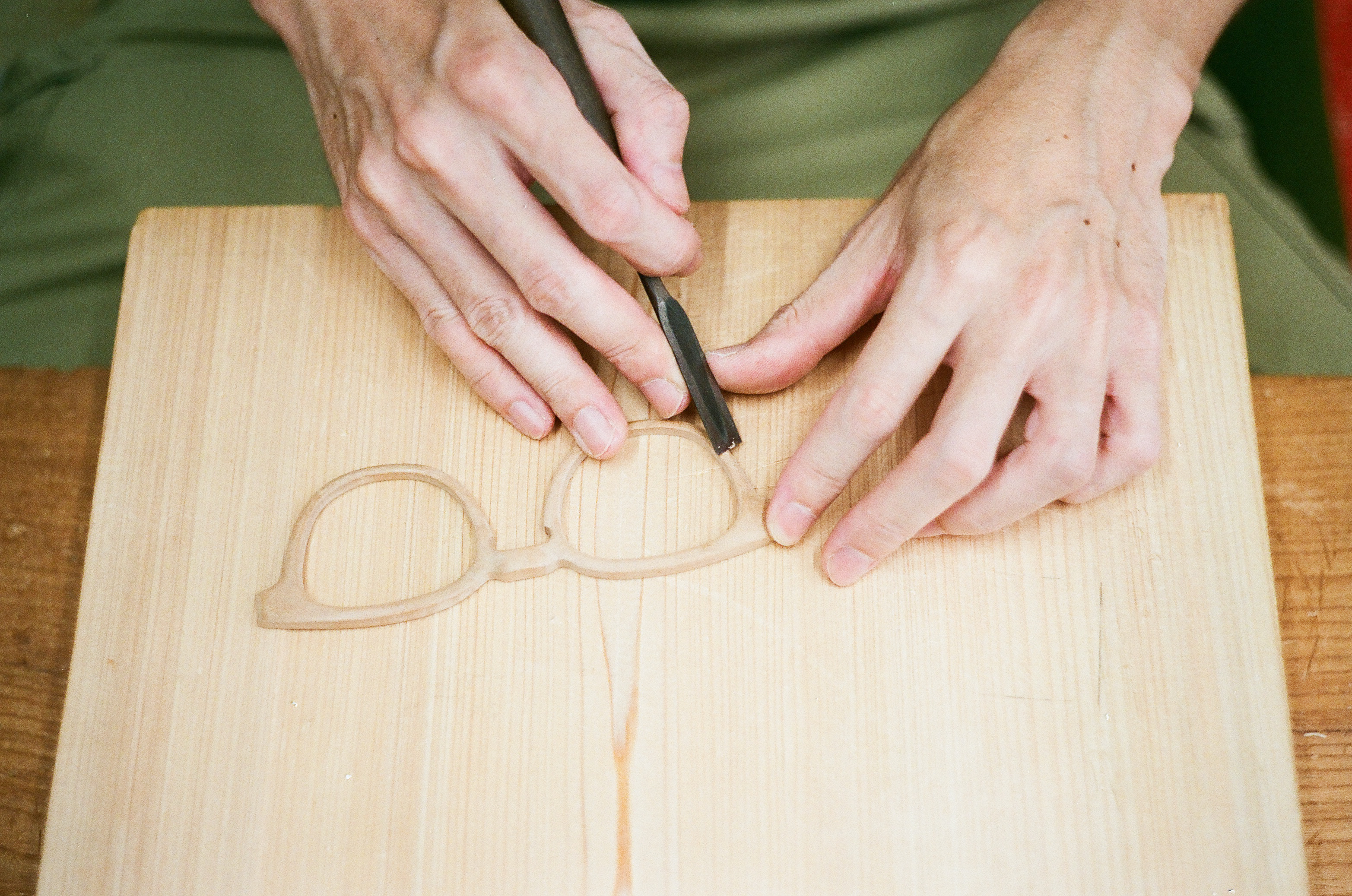
From Danjiri carvings to confectionery molds
I have been working as a Danjiri carver all my life. I first saw confectionery molds at an antique market in Kyoto. At the time, I didn’t imagine that I would become a confectionery mold craftsman. The reason I decided to try confectionery mold making was because my colleges told me that there are not many people making them for Japanese wagashi shops now. I learned mostly on my own, going to confectionery shops and learning from confectionery mold makers in other prefectures. I was able to apply the technique of Danjiri carving to confectionery wood molds making. Danjiri can be done when I think it is good, but for the confectionery wooden molds, it is difficult to know if it is good or not until the actual dried confectionery is made with. I learned a lot from making them about the various techniques and ingenuity that go into making confectionery wooden molds.
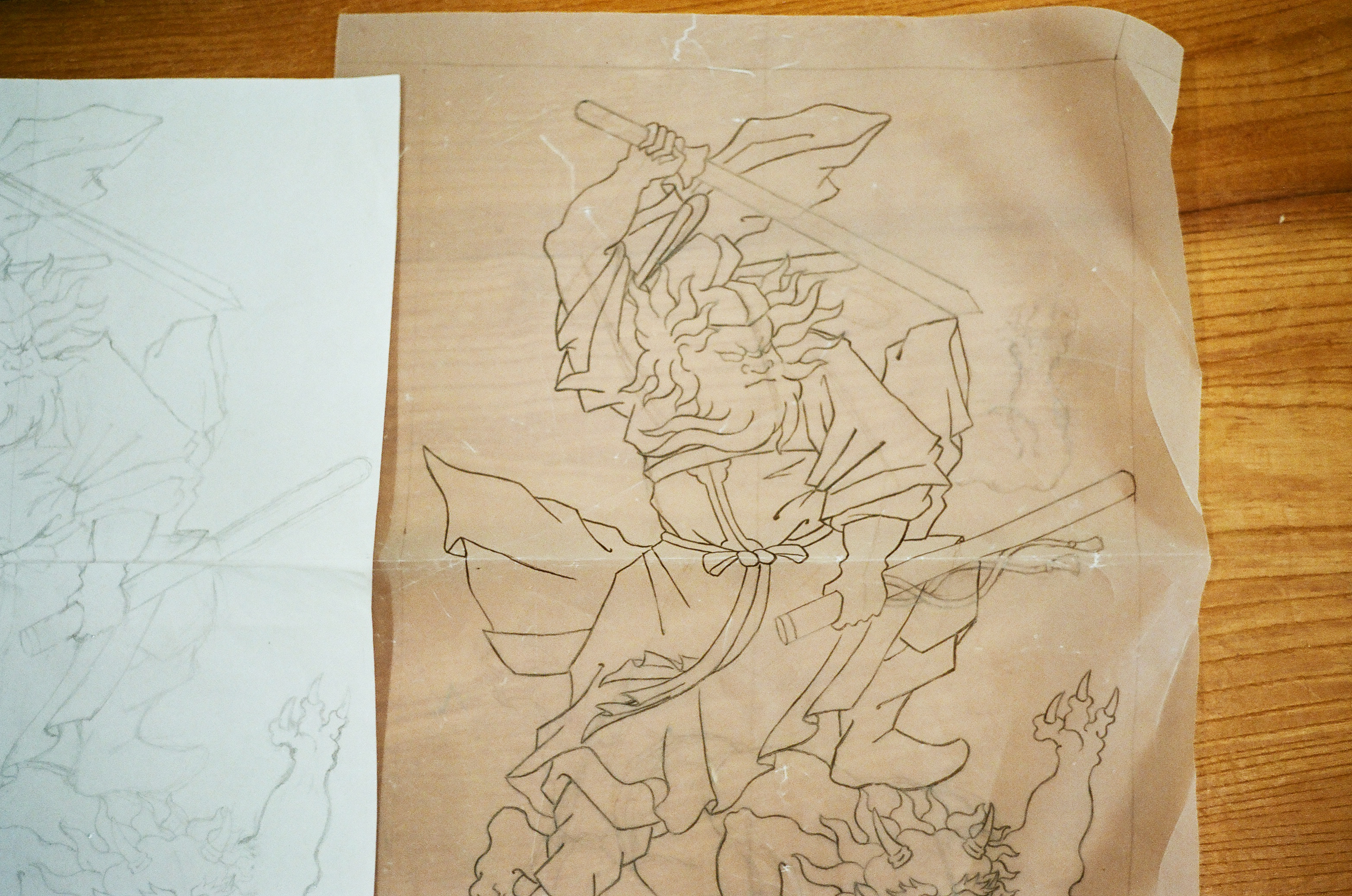
About Handwork
A unique touch that can only be created by hand
Today, there are a lot of digital technology, and I think it is easy to make confectionery wood molds using 3D printers or other methods. However, I would like to preserve the advantages of handwork. For example, when we make a piece by hand, it may look as if the patterns are the same, but in fact they are slightly different. I think this is the kind of expression that can only be created by hand.
Meaning of tradition
I don’t really feel like I’m involved in this business
I may not have much of a sense of importance when it comes to what I do. However, I have great respect for what others do. I love traditional crafts, and I like looking at them, but to be honest, I don’t really feel that I am involved in this business. Maybe it is because I do what I love.
About Succession
I want to pass on the techniques
There used to be many confectionery mold makers in Kyoto, but now I am the only one, and there are only a few in Japan. If I become the only person in Japan who makes confectionery wooden molds, I don’t want to lose the technique. So when the time comes, I may teach it to my sculpture friends, as I think they will be able to do it.
Our values
Creating something that I am satisfied with
Craftsmen are different from artists because they have a certain amount of price for things we make, and they do their work accordingly. I don’t want to create something that I am not satisfied with because of the price. I also don’t want to compromise my technique because of the price, and I always try to create something that I am satisfied with.

